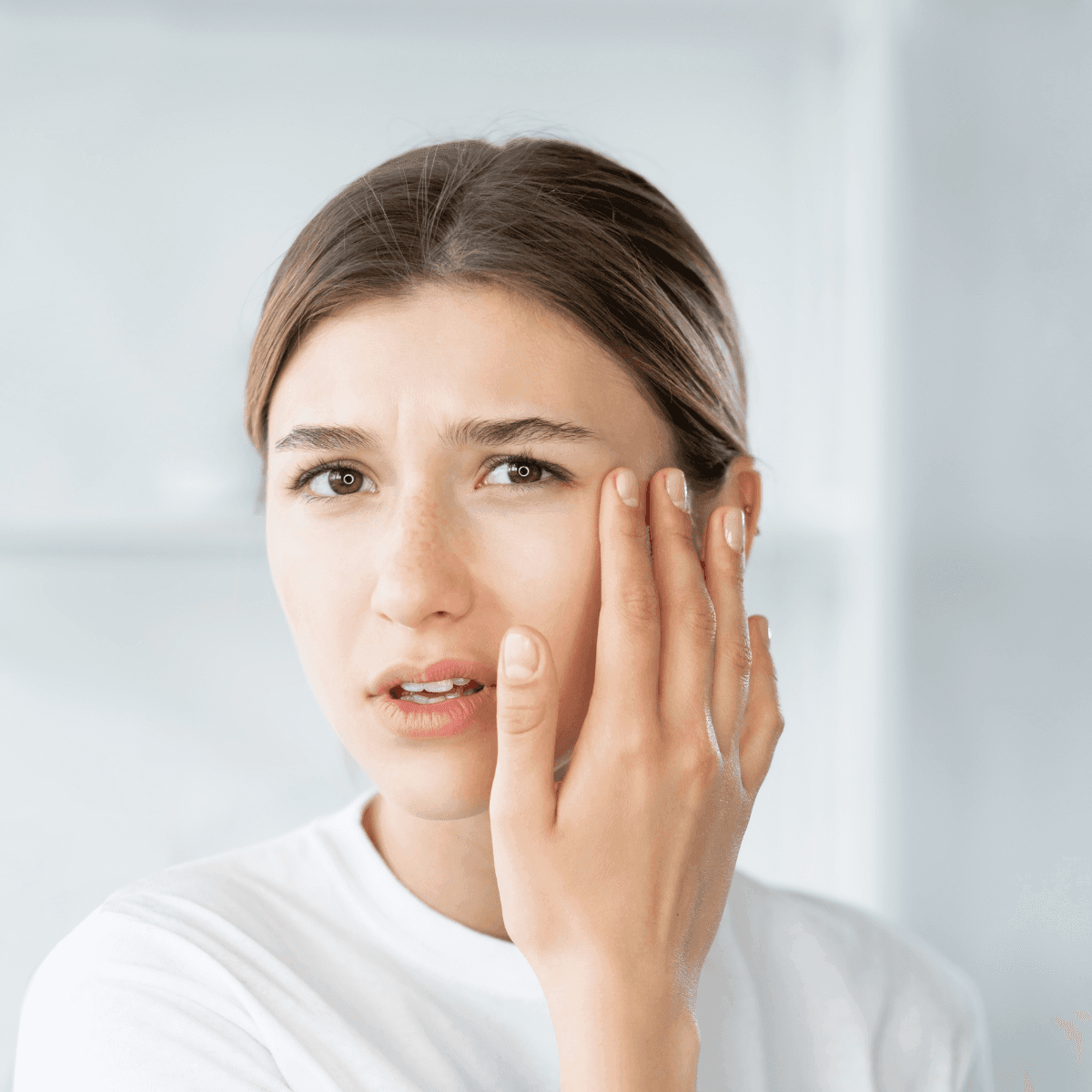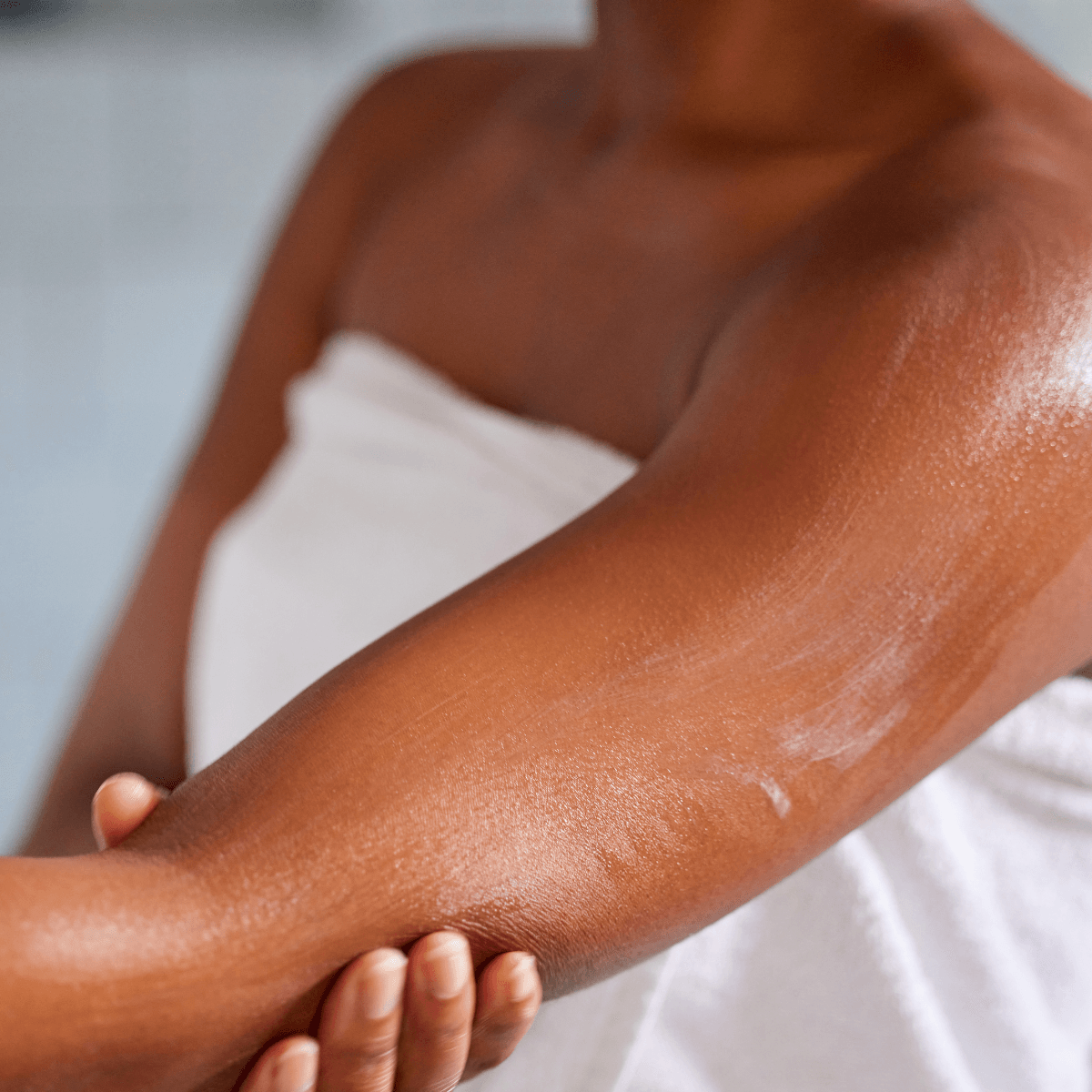Dry, flaky skin can be a real confidence killer, not to mention super uncomfortable. Whether it’s the winter chill sucking the life out of your skin or your skincare routine doing more harm than good, understanding dry skin is the first step to fixing it. Let’s dive into everything you need to know about dry skin – signs, causes, risks, and most importantly, how to keep it at bay.
Contents
What Are the Signs of Dry Skin?
Dry skin doesn’t exactly keep a low profile. Here are the telltale signs to watch for:
- Tightness: Ever feel like your skin’s a size too small for your face? That feeling of discomfort, especially after washing, is your skin screaming for hydration. It’s an early warning sign that your skin barrier is out of balance.
- Rough patches: When you touch your skin, does it feel more like sandpaper than silk? Rough patches are often a sign that your skin’s natural exfoliation process is slowing down, leaving dry, dead cells on the surface.
- Flaking and peeling: Those tiny white flakes on your clothes or in your hairline aren’t just annoying – they’re evidence that your skin isn’t retaining moisture. If left unchecked, flaking can lead to more severe irritation.
- Dullness: Dreaming of a radiant glow but stuck with a flat, tired look? Dry skin reflects less light, making it appear dull and lackluster, no matter how much highlighter you apply.
- Redness or irritation: That random redness isn’t just the cold weather playing tricks on you. Dry skin is more prone to irritation because it lacks the protective oils that keep it calm and balanced.
- Cracks and sensitivity: Severe dryness can lead to cracks that are not only painful but also dangerous. These cracks allow bacteria and irritants to enter, putting your skin at risk of infection.
Dry skin can pop up anywhere on your body, but common trouble spots include your face, hands, elbows, and even knees.

What Causes Dry Skin?
Dry skin has plenty of blame to go around. It’s usually a mix of internal and external factors that gang up on your skin barrier.
Internal Culprits
- Aging: As we age, our skin naturally produces less oil, leaving it more vulnerable to dryness. This is why dry skin becomes more common after 40, especially in areas like the cheeks and under the eyes.
- Genetics: Got parents with dry skin? You might have hit the genetic jackpot. Your skin’s ability to retain moisture is partially inherited, which means some people are more predisposed than others.
- Health conditions: Chronic conditions like hypothyroidism or diabetes can wreak havoc on your skin. They affect your body’s ability to regulate hydration, making dryness a recurring battle.
External Factors
- Weather: Winter air is infamous for its ability to strip moisture from your skin, but hot summer sun can be just as damaging. Either way, extreme weather leaves your skin dry, tight, and thirsty.
- Humidity levels: Indoor heating in winter and air conditioning in summer can suck all the moisture out of the air. Low humidity makes it nearly impossible for your skin to stay hydrated.
- Hot showers: Love those long, steamy showers? Bad news: they’re a major moisture thief. Hot water strips your skin of its natural oils, leaving it dry and vulnerable.
- Harsh skincare products: Think twice before using that squeaky-clean foaming cleanser. Products with sulfates or alcohol can dehydrate your skin and disrupt its delicate balance.
- Poor lifestyle habits: Skipping water, chain-smoking, or indulging in an unbalanced diet can all contribute to dry, dull skin. Your skin reflects what’s going on inside your body, so treat it well!
What Happens If Dry Skin Is Left Untreated?
Ignoring dry skin isn’t just a bad idea – it’s an invitation for bigger problems.
- Dermatitis: Dry skin can quickly evolve into dermatitis, which brings redness, swelling, and itchiness to the party. This condition can be uncomfortable and tricky to manage if it progresses.
- Eczema: If your dry skin gets out of hand, you might develop eczema, a chronic condition that causes severe inflammation and itching. It’s not just uncomfortable – it can also affect your confidence.
- Psoriasis: While psoriasis isn’t directly caused by dry skin, having dry, irritated skin can trigger flare-ups or make existing symptoms worse. This can lead to painful, scaly patches.
- Sensitivity overload: Dry skin weakens your natural barrier, making it more reactive to irritants like pollution, fragrances, or even your skincare products. You’ll find yourself battling redness and discomfort more often.
- Infections: Deep cracks in your skin aren’t just unsightly – they’re dangerous. They create an open door for bacteria and fungi, which can lead to painful skin infections that require medical treatment.
The longer you let dry skin go untreated, the more complicated (and costly) it can become to fix.

How to Prevent and Care for Dry Skin
Managing dry skin isn’t rocket science, but it does take some TLC and a few smart adjustments.
Skincare Routine to the Rescue
- Start with a gentle cleanser that ditches harsh ingredients like sulfates. Creamy or oil-based formulas cleanse without stripping your skin of essential moisture, keeping it soft and balanced.
- Follow up with a rich moisturizer while your skin is still damp. Look for ingredients like hyaluronic acid, ceramides, or shea butter to lock in hydration and repair your skin’s barrier.
- Exfoliate sparingly to avoid overdoing it. Once a week with a gentle exfoliant is plenty – it helps remove dead skin without causing irritation.
- Never skip sunscreen, even on cloudy days. Sun exposure can worsen dryness and damage your skin, so opt for a hydrating SPF that doubles as a moisturizer.
Lifestyle Tweaks for Happy Skin
- Drink plenty of water throughout the day. Staying hydrated from the inside out is one of the simplest ways to combat dryness.
- Invest in a humidifier to keep the air in your home skin-friendly. This is especially helpful during winter when indoor heating can dry out the air.
- Eat a diet rich in healthy fats like avocado, nuts, and fish. These foods help your skin retain moisture and maintain a healthy glow.
- Protect your skin from extreme weather by bundling up in winter or wearing a wide-brimmed hat in summer.
When to Call the Pros
If dryness persists despite your best efforts, don’t hesitate to see a dermatologist. They can recommend stronger treatments like prescription creams or advanced moisturizers.
Treatments to Avoid When You Have Dry Skin
Not all skincare treatments are dry-skin-friendly. Some can make the situation worse, so it’s best to avoid them:
- Harsh chemical peels: These aggressive treatments strip away your skin’s protective barrier, leaving it even drier and more irritated. Save them for when your skin is in better shape.
- Alcohol-based products: Toners, astringents, and cleansers with alcohol might feel refreshing, but they rob your skin of its natural oils. Swap them for hydrating alternatives instead.
- Excessive exfoliation: Over-scrubbing doesn’t solve dryness – it amplifies it. Stick to gentle exfoliants, and don’t overdo it.
- Foaming cleansers: These are often loaded with sulfates that dry out your skin. Opt for cream or gel cleansers that maintain your skin’s natural moisture balance.
- Long, hot showers: As tempting as they are, hot showers are a disaster for dry skin. Stick to lukewarm water to preserve your skin’s natural oils.
Dry skin might be a common issue, but it doesn’t have to be a permanent one. By recognizing the signs, understanding the causes, and adopting a proactive approach, you can keep dryness in check. Your skin deserves love and care, so invest in a hydrating routine, make smart lifestyle choices, and avoid treatments that do more harm than good.
Remember, healthy skin isn’t just about looking good – it’s about feeling good, too. Give your skin the attention it needs, and it’ll thank you with a radiant, comfortable glow.


